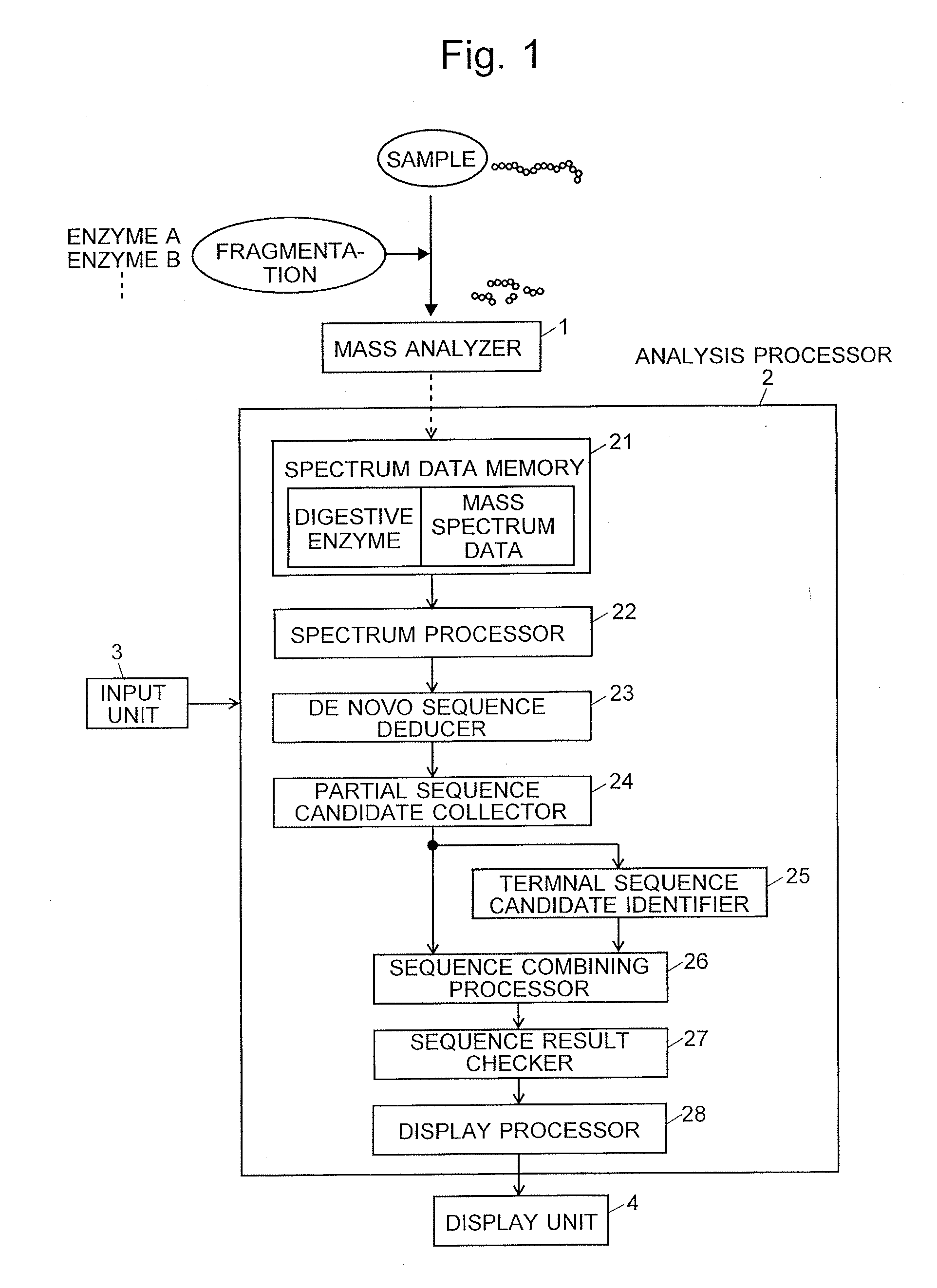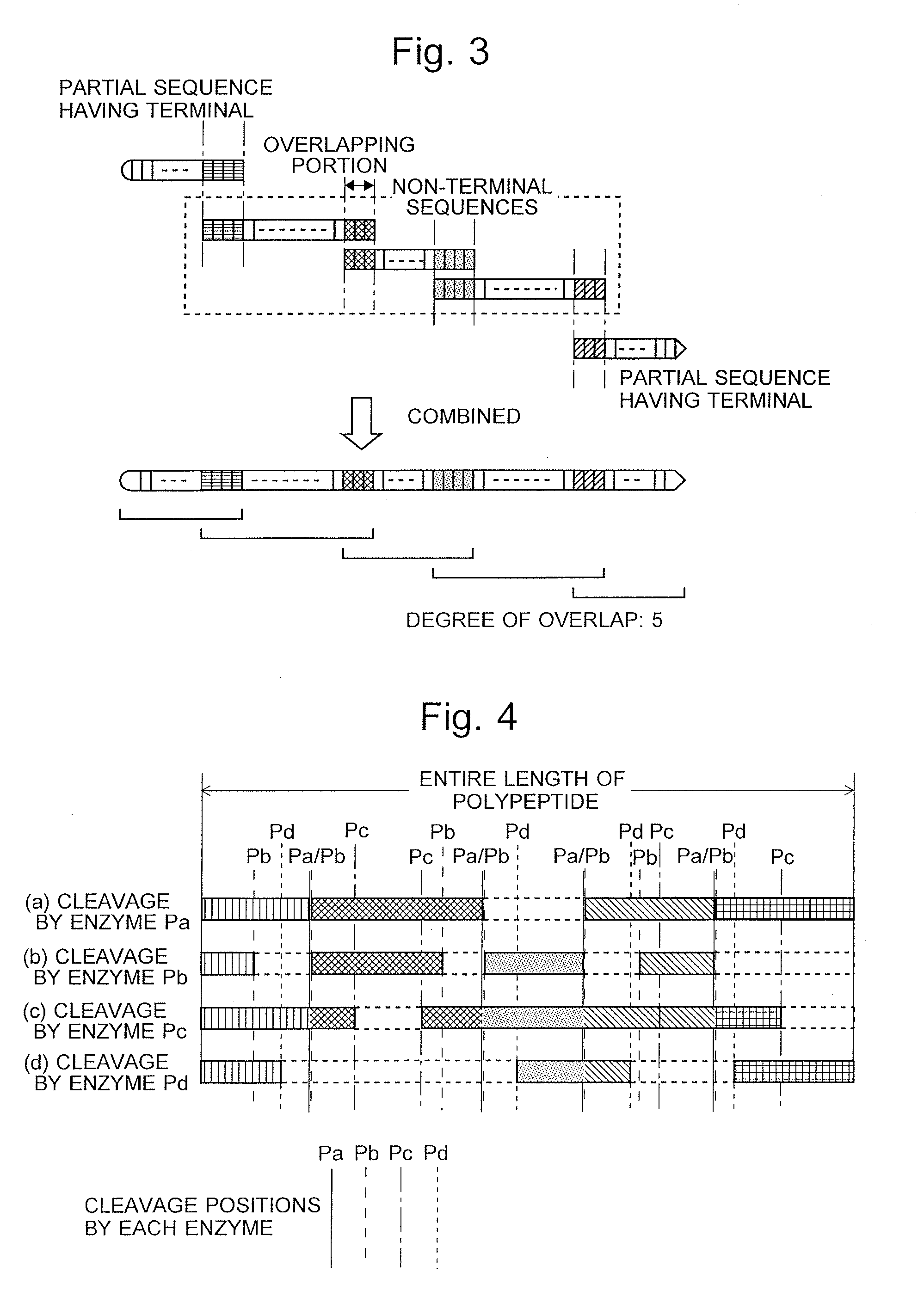Amino acid sequence analyzing method and system
a technology of amino acid sequence and amino acid sequence, applied in the field of amino acid sequence analysis, can solve the problems of not always high ranking of amino acid sequence which is actually the correct solution, method cannot be used for the identification of new proteins, and method is not always effective enough to provide users with useful information. the effect of reducing the accuracy of the amino acid sequence of a protein or peptid
- Summary
- Abstract
- Description
- Claims
- Application Information
AI Technical Summary
Benefits of technology
Problems solved by technology
Method used
Image
Examples
Embodiment Construction
[0061]One embodiment of the amino acid sequence analyzing system using the amino acid sequence analyzing method according to the present invention is hereinafter described with reference to the attached drawings.
[0062]FIG. 1 is a block configuration diagram of the amino acid sequence analyzing system according to the present embodiment.
[0063]The amino acid sequence analyzing system of the present embodiment consists of an analysis processor unit 2 as well as an input unit 3 and a display unit 4, both of which are connected to the analysis processor unit 2. The analysis processor unit 2 includes a spectrum data memory 21, a spectrum processor 22, a de novo sequence deducer 23, a partial sequence candidate collector 24, a terminal sequence candidate identifier 25, a sequence combining processor 26, a sequence result checker 27 and a display processor 28. The mass analyzer 1 is an MSn mass spectrometer (n is an integer equal to or greater than two), e.g. a MALDI ion trap TOFMS. Mass sp...
PUM
 Login to View More
Login to View More Abstract
Description
Claims
Application Information
 Login to View More
Login to View More - R&D
- Intellectual Property
- Life Sciences
- Materials
- Tech Scout
- Unparalleled Data Quality
- Higher Quality Content
- 60% Fewer Hallucinations
Browse by: Latest US Patents, China's latest patents, Technical Efficacy Thesaurus, Application Domain, Technology Topic, Popular Technical Reports.
© 2025 PatSnap. All rights reserved.Legal|Privacy policy|Modern Slavery Act Transparency Statement|Sitemap|About US| Contact US: help@patsnap.com



